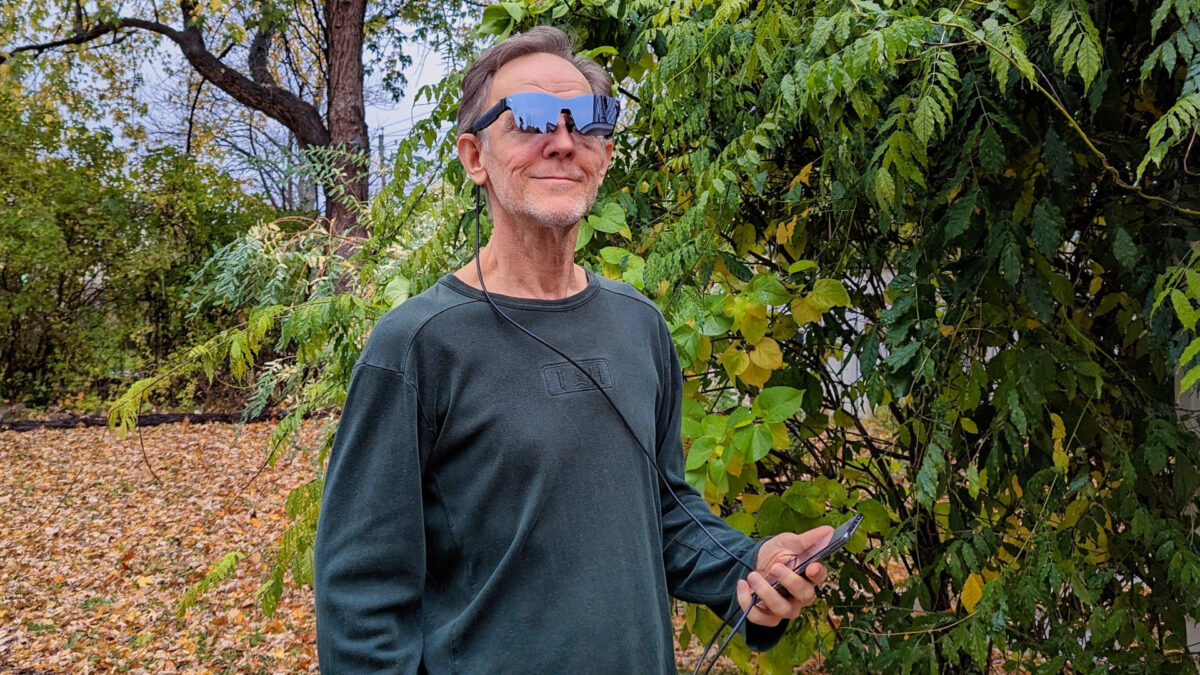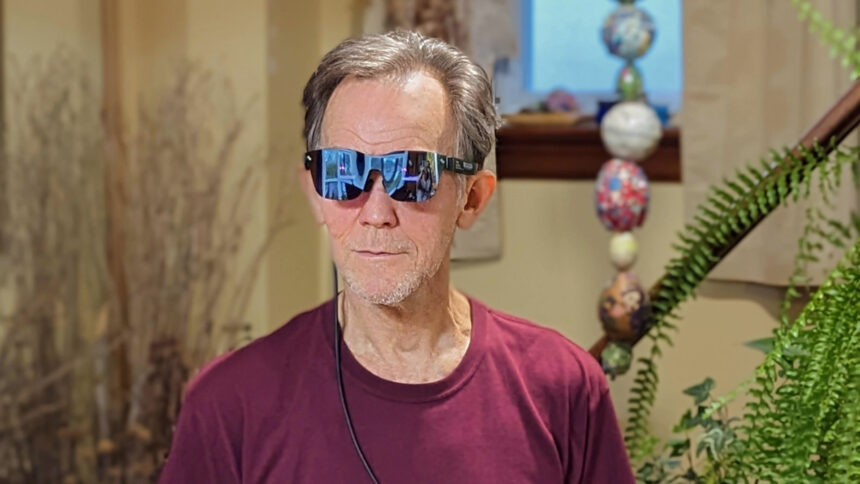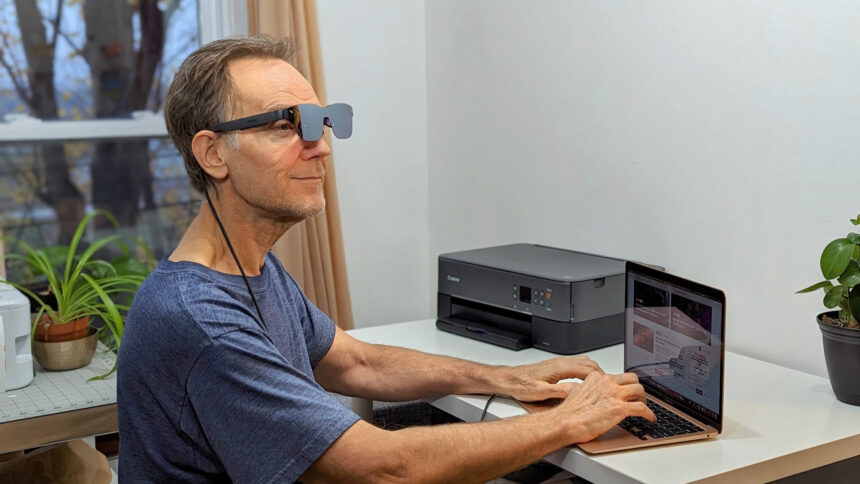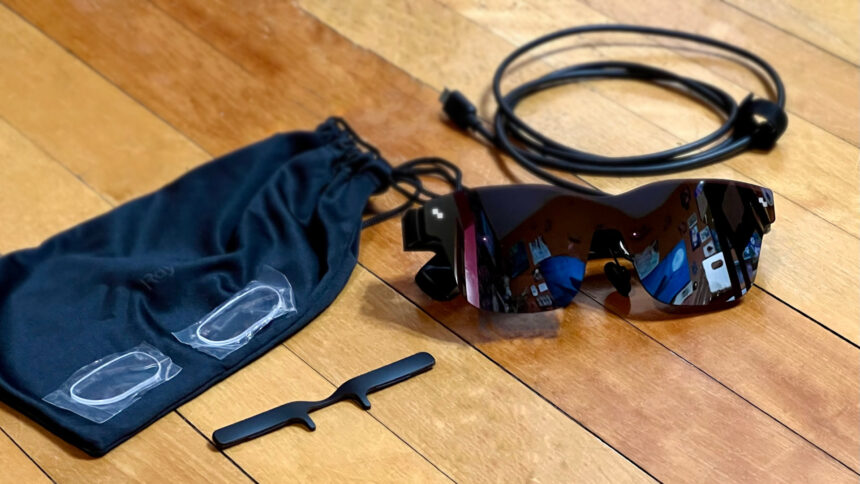Hands-on with TCL's lighter, brighter RayNeo Air 2 smart glasses

TCL's RayNeo Air 2 smart glasses feature improved displays and speakers while becoming slimmer and lighter.
TCL recently released its newest smart glasses, the RayNeo Air 2. There wasn't an Air 1, so this new version is best compared to the NXTwear S that I reviewed on October 1, 2023.
The Air 2 increases display brightness, improves audio, and feels lighter. Those are all key factors in the design of smart glasses, but should you upgrade or wait for the next version?
Bigger and brighter virtual screens
Many smart glasses serve as TV and monitor replacements, so display and speaker quality are critical details. With each new release, I expect significant improvement, and TCL didn't disappoint.
The RayNeo Air 2 is 25% brighter than the NXTwear S, reaching 600 nits. It also differs from the previous model by making the shades part of the glasses. It's like wearing dark sunglasses. I liked having the option to remove the shade of the NXTwear S, but to be honest, I rarely did so.
That matches the Rokid Max smart glasses, which previously led all other smart glasses in this class. You'd have to step up to the Magic Leap 2 to get a brighter through-the-lens display.

Alan wears RayNeo Air 2 smart glasses while connected to a Samsung phone. | Bild: Mixed
When indoors, the virtual screens really pop, and it even makes sense to lower brightness. When I step outside with the Air 2, the display barely fades when set to maximum intensity unless I'm in strong sunlight.
The brightness control is on the right earpiece and volume is on the left. Each is a rocker switch similar to the volume on a smartphone. That makes adjustments quick and intuitive.
The field of view (FoV) has also increased, reaching 46 degrees, matching the Xreal Air 2's screen size. The Rokid Max provides the largest virtual screen size with its 49-degree FoV.
Of course, for the ultimate immersion, virtual reality wins. Most VR headsets provide more than double the field of view of even the best smart glasses and AR headsets. However, you can't put a bulky headset in your pocket, so smart glasses are a great solution for media consumption and even productivity when traveling.
The sound quality is good, but I did notice some buzzing if I turned the volume to maximum. That would only be a concern if you were in a noisy area.
Device compatibility
TCL gave the RayNeo Air 2 spatial awareness via an Android app called RayNeo XR. This opens a wide virtual display with different portions appearing when I turn my head. It's an AR feature similar to Xreal's Nebula app (take a look at our Xreal Air 2 review).
The app requires a compatible Android phone or tablet. My Samsung Galaxy S20 works as a pointer and a keyboard, so I can open up to three browser windows side by side, watch Youtube, browse a collection of 360 videos, or play games in that mode. Samsung's Dex also works, providing an Android desktop experience.
Like other smart glasses, you need an adapter if you don't own a device that supports USB-C Alt mode. The latest iPhones have USB-C ports and should work with the RayNeo Air 2.
For my iPhone 13 Pro Max, I needed to use TCL's MiraScreen adapter, which magnetically attaches to the back of the iPhone and a short Lightning cable provides screen mirroring.

Alan wears the TCL RayNeo Air 2 as a second screen on a MacBook. | Image: Mixed
I can connect to my MacBook Air or Chromebook and instantly get a second display. My Windows PC doesn't support USB-C Alt mode, so I needed an HDMI to Type C adapter. The Steam Deck should allow direct connection, but the Nintendo Switch requires an adapter.
More comfortable smart glasses have arrived
Comfort is a critical issue since smart glasses are heavier than normal glasses but lack the head straps of VR headsets. TCL managed to reduce weight significantly. At 2.7oz (76g) the RayNeo Air 2 glasses are nearly a third of an ounce (9g) lighter than the NXTwear S.
The earpieces are adjustable to align the screens better vertically. By tilting the rear of the earpieces up, I can see the bottom of the virtual screen more easily. A USB-C cable, cleaning cloth, and bag are included, along with a magnetic holder for prescription lenses.

TCL includes a USB-C cable, prescription lens holder, cloth, and bag. | Image: Mixed
The nose pads are soft and comfortable, and the bridge can be widened with gentle pressure. After a minute of customization, I can wear the new TCL smart glasses for hours without feeling too much pressure on my nose.
Overall, I like the RayNeo Air 2. They're attractive, have a bright and vivid screen, and provide long-lasting comfort.
They're available on the RayNeo website and at Amazon. The retail price is $379, but, for a limited time, you can get the Air 2 smart glasses for $299.
Note: Links to online stores in articles can be so-called affiliate links. If you buy through this link, MIXED receives a commission from the provider. For you the price does not change.